Latest technology for putting out harvest machinery fires
It’s hard to imagine given the sogginess of the past 12 months, but there’s always a chance we could be in for a tinder-dry harvest, à la 2022.
That year, insurer NFU Mutual reported more than 800 agricultural machinery fires during the summer season, which wreaked havoc for scores of farms and contracting businesses.
See also: Business Clinic: Does insurance cover combine fires?
Fires can affect anyone, but taking the right precautions can help stack the odds in your favour and give you a fighting chance of tackling any blazes before they take hold.
We’ve taken a look at some of the latest kit to help keep machinery protected.
Fire Safety Stick extinguisher
Offering a discharge time of more than 100 seconds, the Fire Safety Stick packs a far greater firefighting punch than its compact size might suggest.
Unlike a conventional liquid-filled extinguisher, the sticks are made from a solid resin that breaks down when activated, releasing a stream of nitrogen gas containing potassium-free radicals.
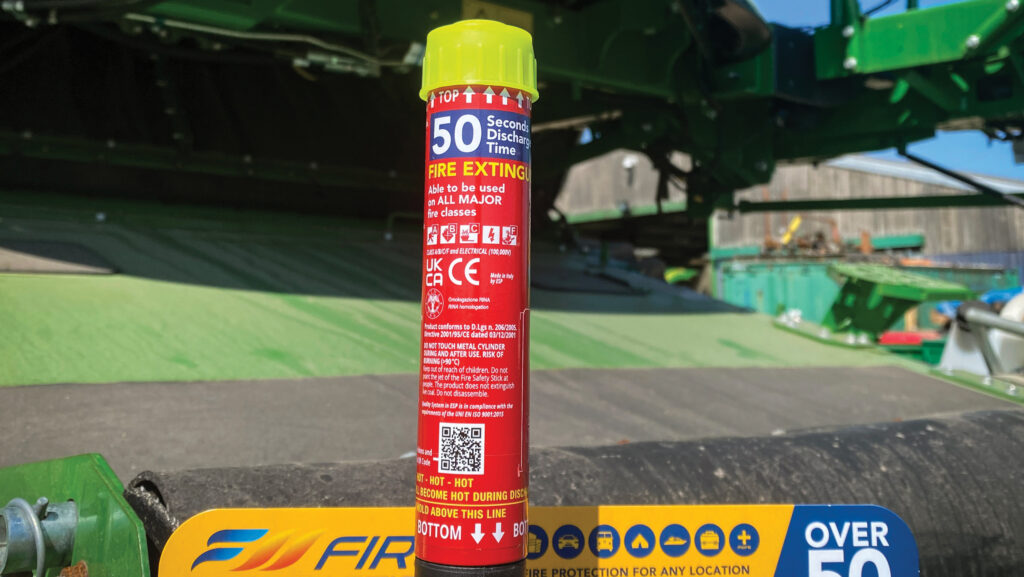
© Fire Safety Stick
These chemically interfere with the oxygen around the flames, thereby extinguishing the fire.
Crucially, the oxygen supply to the user isn’t affected, and they don’t release any toxic substances. The fact that only gas is emitted means there’s no mess to clean up after use either.
The resin is housed in an aluminium tube and is activated by removing the top cap, and striking the tip with a tool that slots into the handle.
As the gas starts to stream out, users can direct it at the base of the fire or, if the flames are in a confined space, throw it into the area and let it do its work.
They can be used on a wide range of fires including solid and liquid combustibles, flammable gases, electrical, cooking oils/fats and chimneys. However, they are not suitable for coal, wood or lithium battery fires.
Two sizes are available – the FSS50 and FSS100 – with the names corresponding to the minimum discharge time they offer in seconds. Prices vary depending on the retailer, but they can be found for about £60 and £90 respectively. Brackets are also available for fitting them to machinery.
Servicing isn’t necessary for either model and they have a 15-year shelf life.
P50 fire extinguishers
They might look like any other fire extinguisher from a distance, but state-of-the-art P50 models have plenty of benefits over their standard steel counterparts.
Chief among these is the fact that their composite containers – containing fancy materials such as Kevlar, aramid fibre and polyethylene – don’t suffer from corrosion.
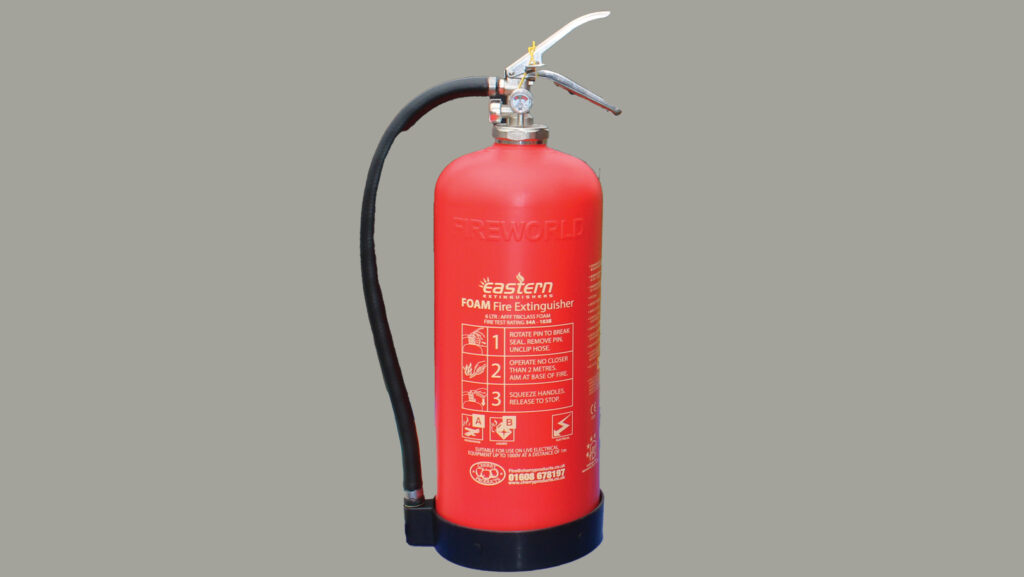
© P50
This means they don’t need to be professionally serviced every year and the contents lasts for eight years before needing to be refilled. They also have a 20-year total lifespan.
Plenty of retailers now offer these extinguishers, including Oxfordshire-based Cherry Products which sells units from Norfolk firm Eastern Fire Extinguishers.
P50 extinguishers can be filled with most common fire-taming agents, including water mist, powder and wet chemical.
But the Eco Foam variant is generally the best bet for all-round farm use. This is certified for use on flammable solids such as wood, rubber and plastics, flammable liquids such as diesel and petrol, and electrical fires up to 1,000V.
Three sizes are typcially offered – two, six and nine litres – which have respective discharge times of 18, 40 and 49secs.
Prices for these run from about £60 to just over £170.
Fireward combine fire suppression system
Hailing from Chelmsford, Essex, Fireward fits custom suppression kits on agricultural machinery that snuff out fires as soon as they spark up.
When flames or excess heat are detected these P-Marked systems automatically spray powder and foam agents around the machine to extinguish the fire, and cool hot areas to prevent reignition.
They can be fitted to most machines, but are probably best suited to high-value and high fire risk items such as combine harvesters.
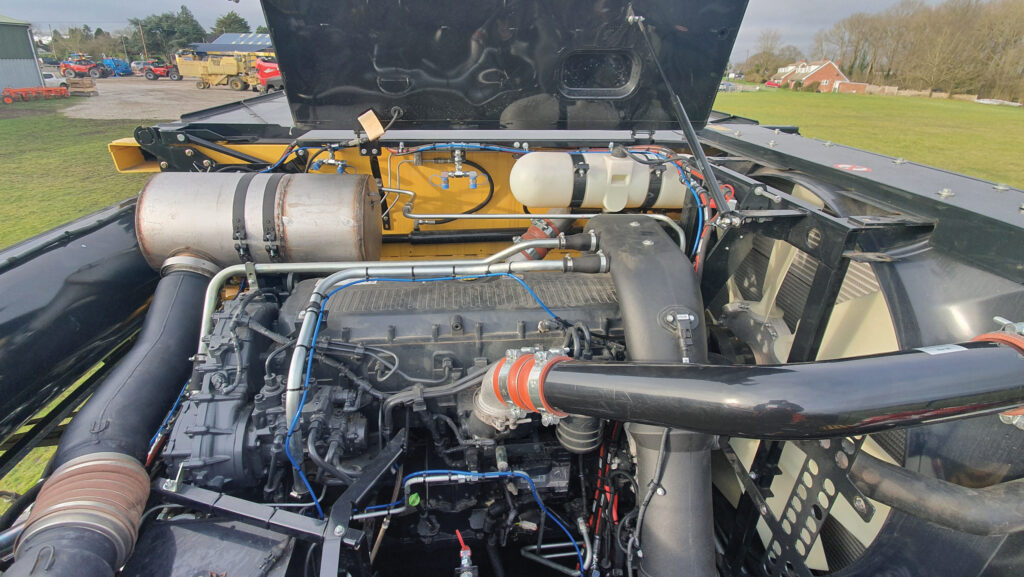
© Fireward
Installation is typically a two-day job that involves threading some 25m of pipework around the major components.
A portion of this is pressurised detection tubing, which ruptures under extreme heat or flame, signalling canisters of powder to be released.
This is distributed via a separate network of tubes with spray nozzles positioned in key locations such as the engine bay and next to banks of hydraulic services.
Once the powder has done its work stifling the flames, a chemical foam agent is released to finish the job off and reduce the likelihood of the fire reigniting.
For added peace of mind, buyers can opt for automatic engine shutdown and a manual in-cab actuator, should the driver spot trouble before the system does.
Both the powder and foam are stored in containers mounted at the rear of the machine which look similar to a conventional extinguisher.
The cost varies considerably depending on the host vehicle and setup chosen, but Fireward says it usually works out about 1-2% of the machine’s original purchase price. Prices for entry-level systems start at about £1,600.
Annual servicing is also required to make sure the system is functioning correctly.
FireSafe automatic decoupler
If a baler goes up in smoke, the Siwi FireSafe automatic decoupler allows operators to detach it in seconds, saving the tractor from suffering the same fate.
There are two main elements to the system, one of which disconnects the drawbar and another that severs hydraulic, air and electrical services.
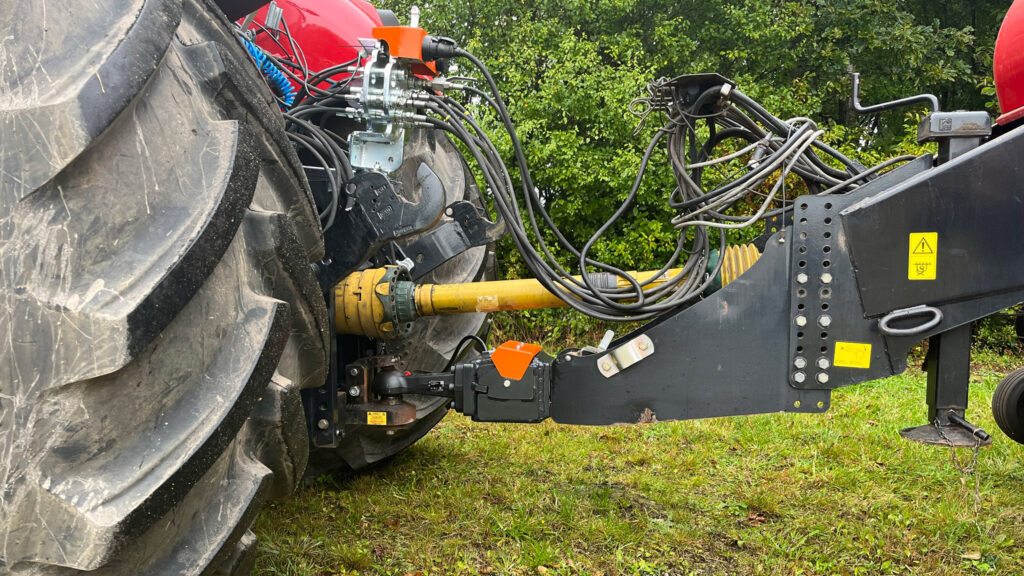
© Siwi FireSafe
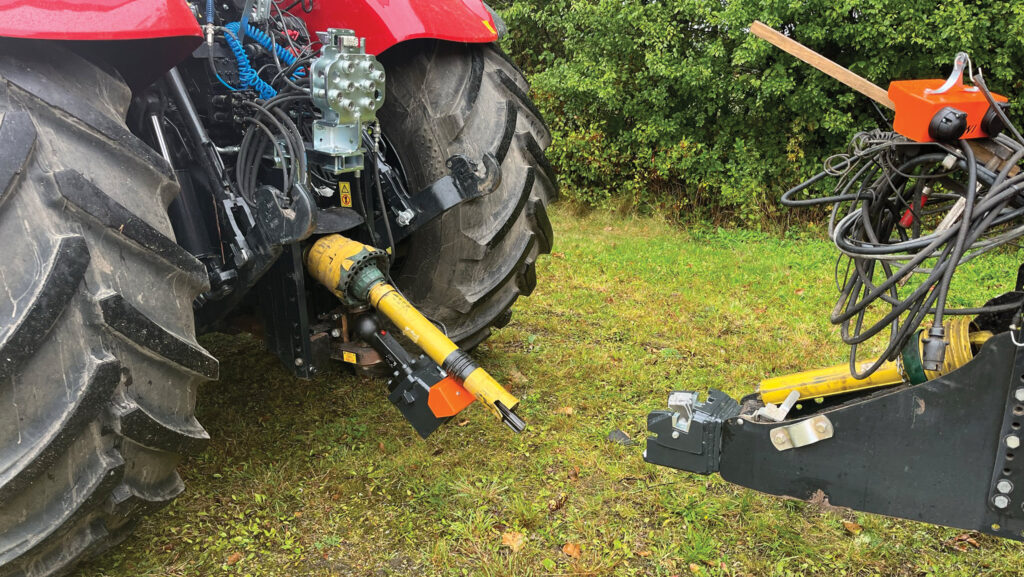
© Siwi FireSafe
The former comes as a unit that bolts between the drawbar and a K80 ball hitch. Once activated, a latch opens and a shear-bolt will snap, allowing the baler to break free.
At the same time, a separate latch on the electrohydraulic coupler opens so they cleanly detach from the tractor. This can accommodate up to 10 hydraulic and air services, plus electric and isobus connections.
All that’s left then is the pto, which will separate on its own.
Drivers activate the system by pressing a safety switch in the cab, before operating a spool valve that releases the latches in seconds. Just one spool is required to operate both parts of the setup.
If the components aren’t damaged in the fire, they can be reassembled and used again.
FireSafe is sold by KRM in the UK and a complete setup costs £10,960. If the drawbar and electrohydraulic modules are bought separately, they’re priced at £7,290 and £4,310 respectively.
Enduramaxx water tanks
There’s no substitute for a large volume of water when tackling a fire that’s started to get out of hand.
For those that don’t already have a bowser, Enduramaxx offers a range of “transport” tanks that can be attached to a regular trailer.
These come in a range of sizes from 200 litres to 10,000 and are compatible with various types of pump.
As a guide to how much impact these can have on a fire, a 6,800-litre tank can supply 28 minutes of uninterrupted water through two hose reels operating at 30 bar.
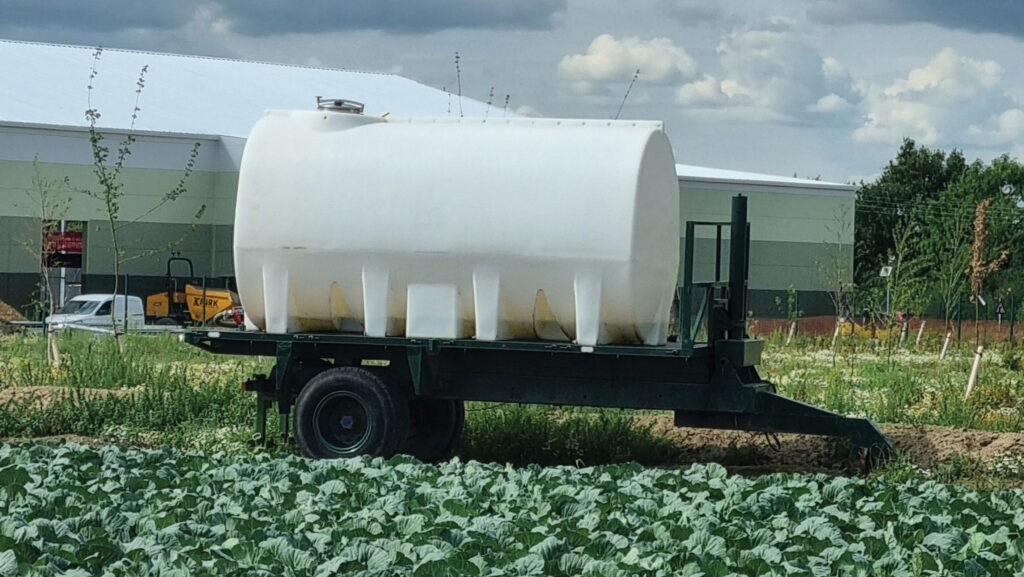
© Enduramaxx
The tanks are made out of impact-resistant plastic and are designed to mount onto flat surfaces using a pin securing system.
A ball baffle system is available to prevent sloshing during travel, as well as a range of fittings, including those compatible with fire engines.
Prices start at £108 for a 200-litre tank, rising to £4,335 for a 10,000-litre version.
Applied Varimount 120 compressor
When it comes to fire, prevention is better than cure. Regular dusting down of machinery to remove highly combustible chaff and straw is therefore crucial.
Leaf blowers and regular compressors will make some impression, but heavier duty screw-type units will do a far more comprehensive job.
Second-hand self-propelled machines are one option, but a neater alternative is a pto-driven unit.
One example is the Varimount 120 from Applied, which can be mounted on a tractor’s front or rear linkage.
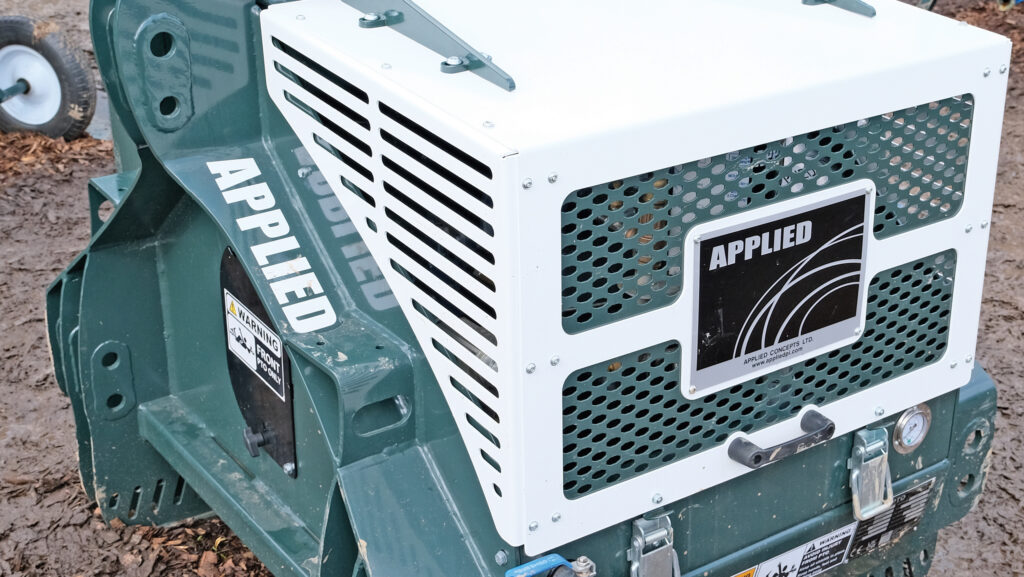
© Varimount
Like the firm’s larger 350 CFM model, it uses a screw compressor to produce a high volume of pressurised air.
Output is lower at 120 CFM, but the firm says this is still ample for the task of blowing off machinery or running a sand blaster. It just doesn’t have sufficient output for clearing out long lengths of slurry pipe.
One notable difference is the use of a drive belt rather than the 350’s drive chain, which means operators don’t have to remember to oil it periodically.
An after-cooler ensures that the machine runs at a safe temperature and there’s an automatic water separator that removes moisture from the air stream.
The Varimount 120 is made at Applied’s manufacturing facility in Birr, County Offaly, and is priced at about £8,500.

